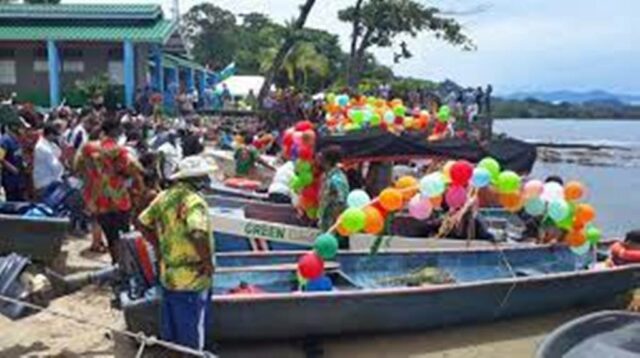Cahuita recalled this past Saturday the African slaves that in March 1710 lost their lives in what is today the national park and where the people as Kawe Ta had been born before. Two galleons (large ships) heading towards the island of Saint Thomas ended their days at the bottom of our southern Caribbean.

Some sources speak of a riot, others of a crash against the reefs. Neither gives the exact number of deaths. Local people who study Cahuiteño history have found bricks, cannons and shackles on the site. The galleons would be the Fredericus IV and the Christianus V, which transported slaves. The survivors fled into the mountains. Some were recaptured.
In the ceremony, having left behind the tropical storm that dumped rain since the morning, ten boats adorned with flowers and colored balloons, waited at 11 in the morning to travel to the place in the sea where the shipwrecks occurred.
A special honor to the fallen
It was a special activity. In the front row, next to Vice President Epsy Campbell, was Odeneho Kwafo Akoto III, King Akwamu of Ghana, who spoke of “forgiveness” for what happened three centuries ago and of “light” for the future of those who descend from the Africans uprooted from their lands to supply American plantations. To the place where the boats traveled, the king sent an offering to honor the memory of the deceased, names lost in a history of injustice and exploitation.

The so-called “site of the galleons” is well known in Cahuita. In October 2020, it was reported the discovery of an ancient anchor while footage was being recorded there for “Enslaved,” a multi-chapter documentary in which actor Samuel L. Jackson participated. Justo López, who found the anchor, told then: “as in 1979 or 1980 there were still little houses where the Cahuita National Park is today, and almost in front of where the galleons are, we used to dive as children. At that time we took out several cannon balls and bottles of wine”. Today, already known as the Land of the Calypso, Cahuita recalls that part of its rich history has roots in Africa.

